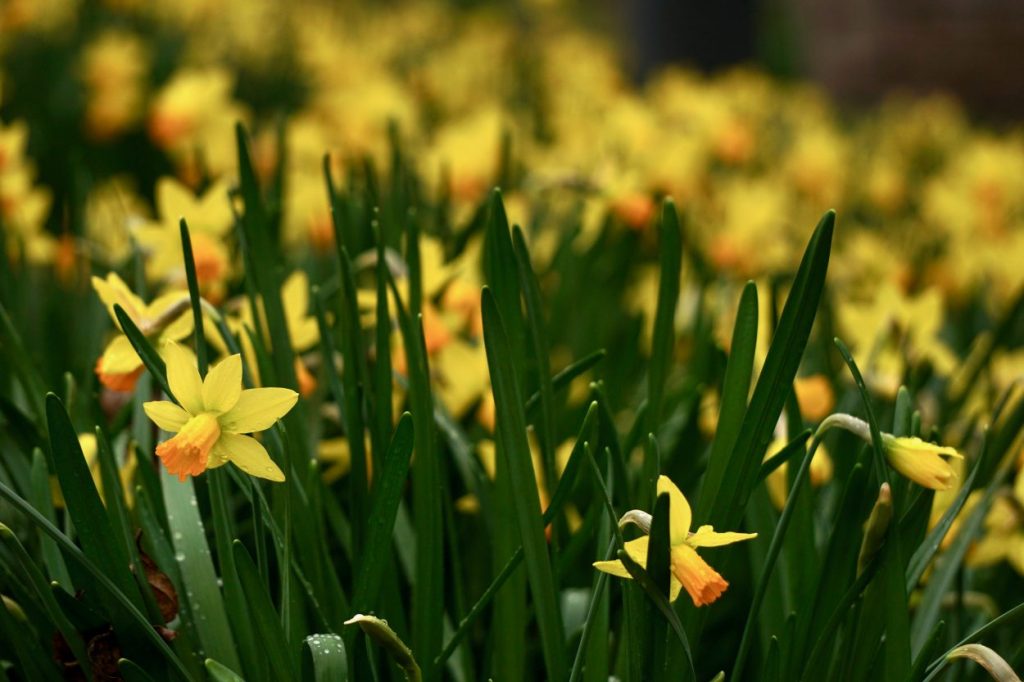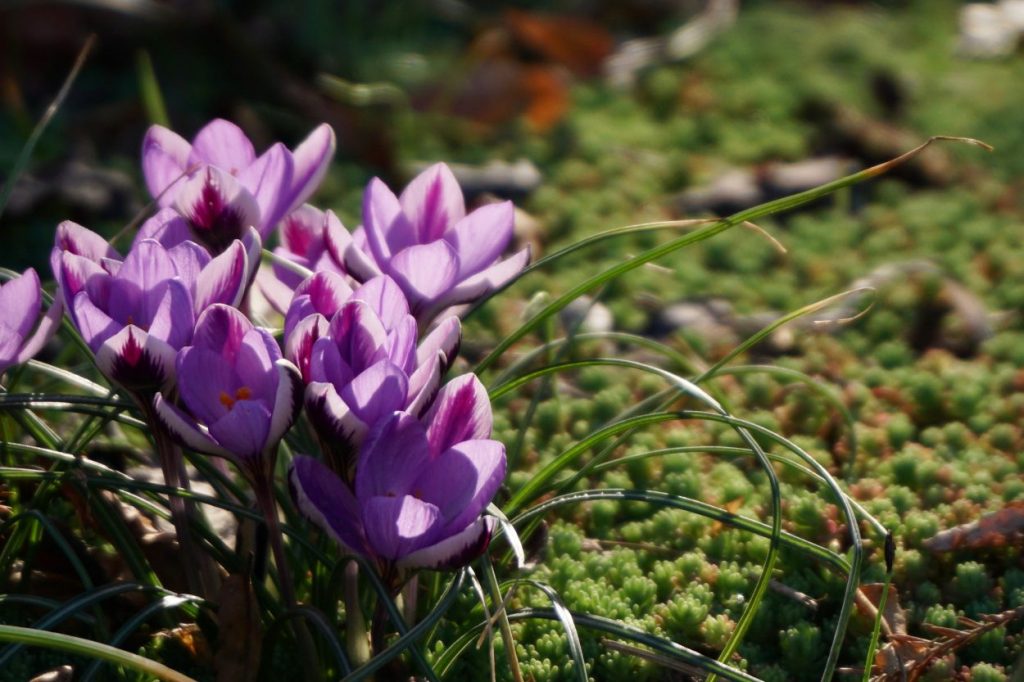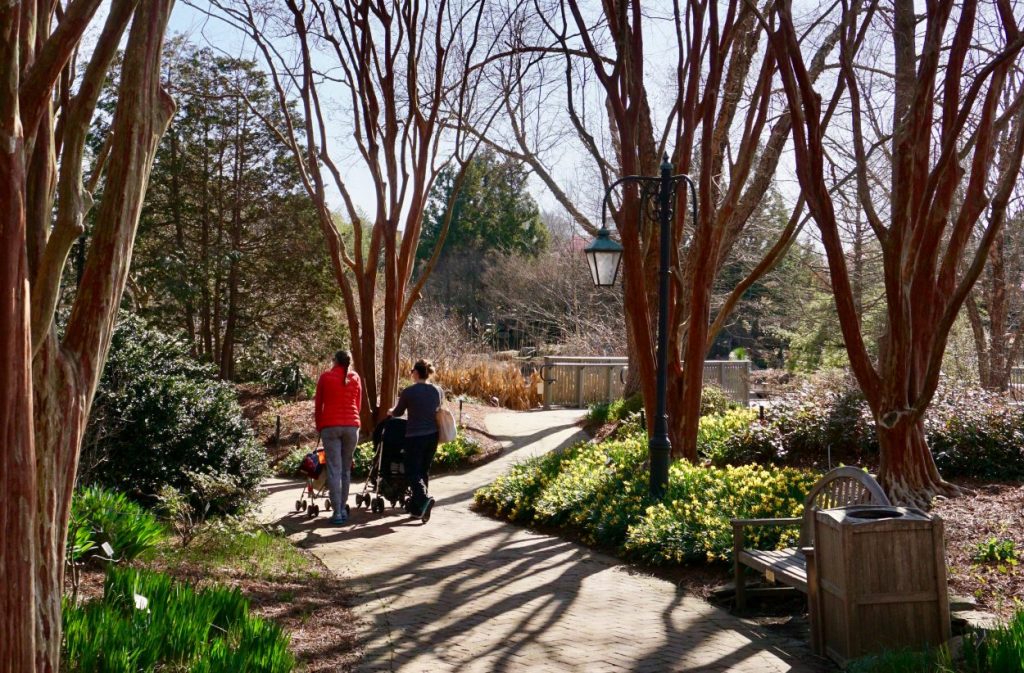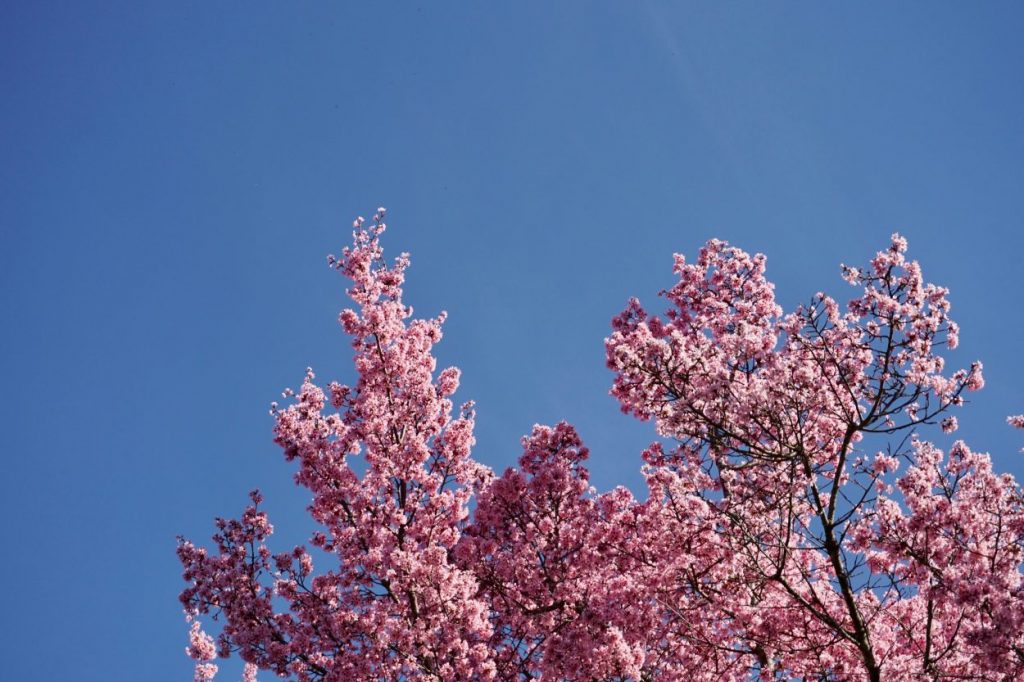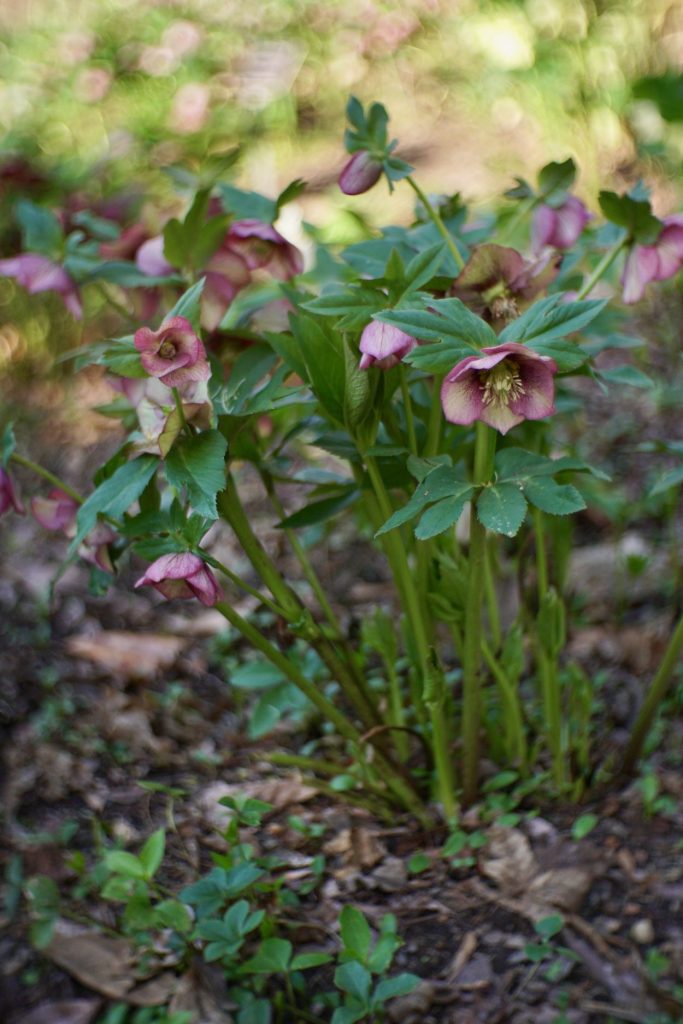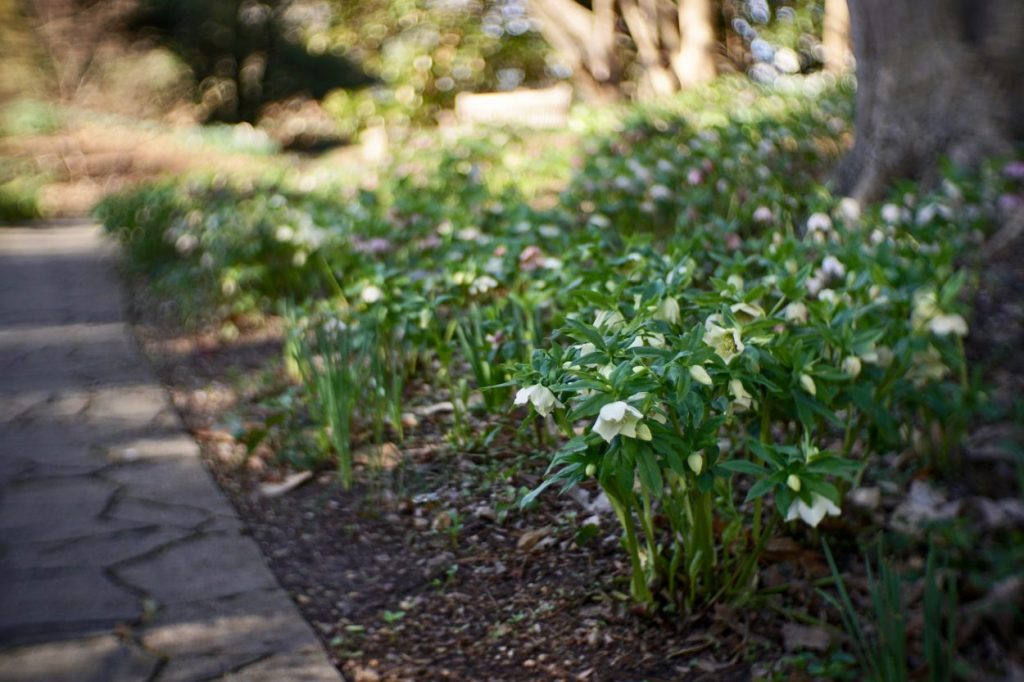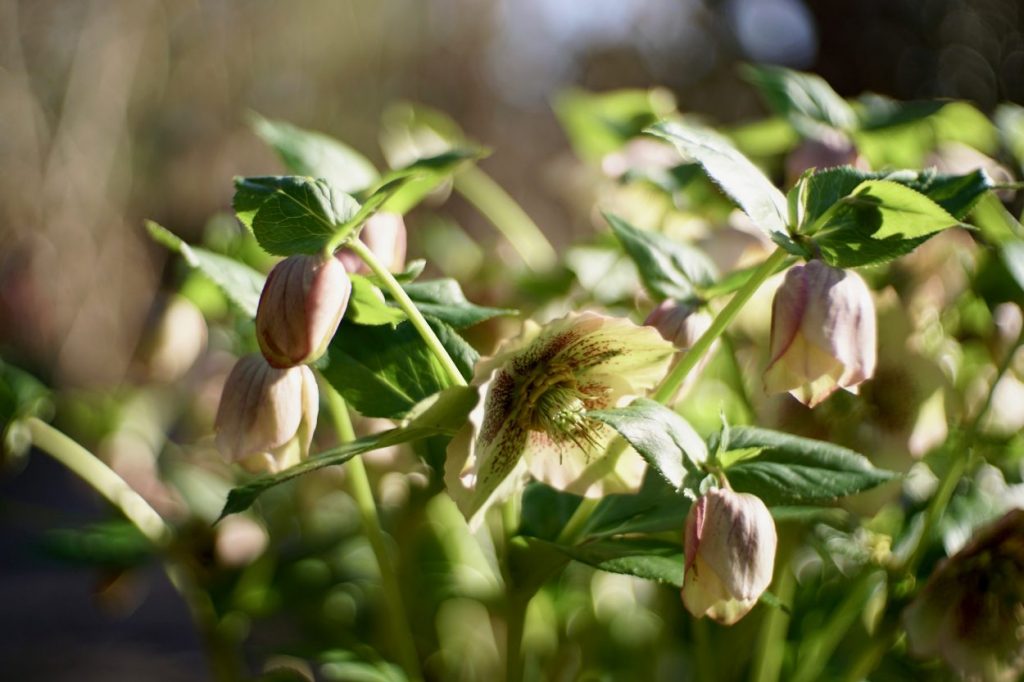Quiet Greetings from the Hellebores
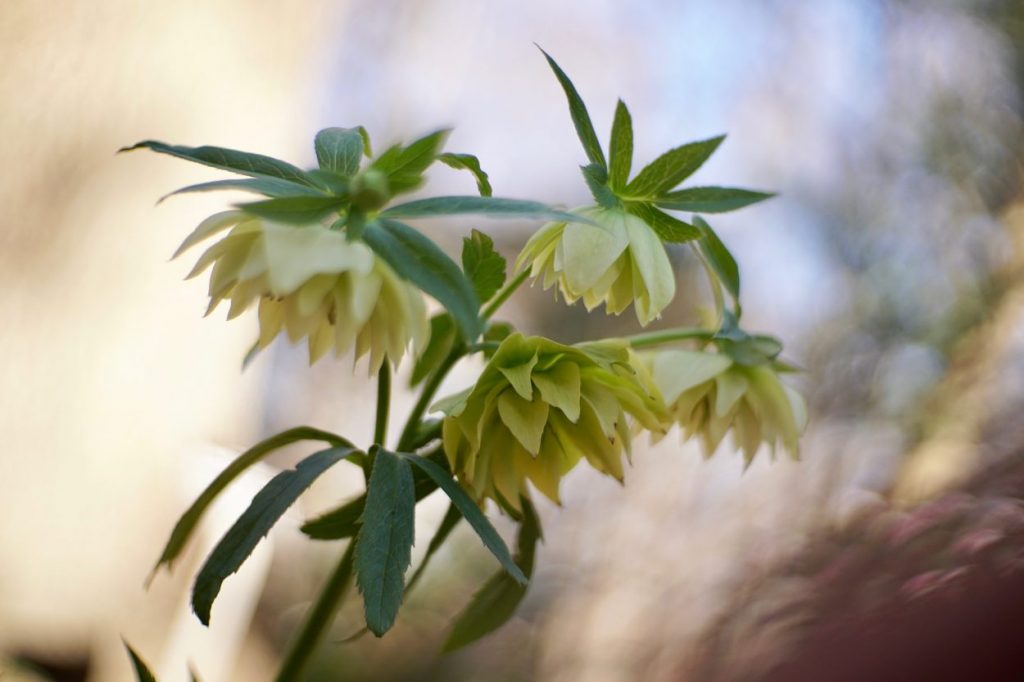
Hellebores in Flagler Garden, a magical sight.
It was maybe two weeks ago when a couple of visitors stopped by the Admissions desk on their way out of the Garden to show us all pictures they had taken of the first couple of daffodils they saw blooming. Sitting behind the desk on that late winter day, a wave of excitement rushed over me – and I think everyone else standing in earshot – the garden was waking up again! And while it has its own quiet beauty through the winter – full of holly, weaving tree branches, and fiery red twig dogwoods (Cornus sericea), there is something undeniably joyful about seeing that first daffodil poke its little head out to say hello.
Since that day of excitement a mere two weeks ago, the garden has truly come alive in every way. Being in the Visitors Center we get to greet not only the flowers but the visitors that come with them. With the tiny clusters of glowing purple crocuses poking up out of the ground, we get clusters of toddlers sticking their hands over the desk to get stamped. With the apricot (Prunus mume) and cherry blossoms (Prunus × incam ‘Okame’) showing their blooms along the Cherry Tree Walk, we have passionate photographers who stop by just to show us their prized images of the day. As the soil becomes workable, more volunteers come to do their gardening work.
Among all of these early, vibrant signs of spring, a softer, more mysterious flower always catches my eye. Though it may not be as bright or as bold as some of the others, the hellebore for me acts as the perfect transition from winter to spring. Growing close to the ground in shades of green, dusty pink, and white, hellebores are one of the first things to bloom here in the Garden. Their subtle shades and soft presence ease us back into spring – preparing us for the brighter daffodils and tulips to come. While walking through Flagler Garden, the Asian Valley, or even in the Fountain Garden, just outside of the Robins Visitors Center, you may have to look closely for these quiet blooms as they tend to blend into their surroundings. Once noticed though, they pull you right in with their unique, almost mystical presence.
On top of being beautifully unique, hellebores have quite an interesting history. Their botanical name, “Helleborus,” has Greek roots – helein means to injure or destroy and bora means food. This is because hellebores are very poisonous – according to Dr. Leonard Perry, Extension Professor from the University of Vermont, they were used as long ago as 1400 BCE to induce vomiting – thought at one time to purge the mind of impurities. Dr. Perry writes, “It is found in writings through the ages, from the ancient Greeks through the Middle Ages, when it was used by herbalists. It has been used for animal ailments, to bless animals and keep them from evil spirits, to repel flies, to ‘purge the veins of melancholy, and cheer the heart’, or even in one superstition to make oneself invisible if scattered in the air!”
Though they still hold a spellbinding presence, nowadays hellebores are grown, not for the effects of their poison, but for their captivating beauty and early blooms. What they may lack in magical powers, they make up for in these fruitful qualities. Extension Horticulturist Gerald Klingaman says that some species of hellebores can bloom as early as December – bringing early and much needed energy to gardens despite the cold. Their resilient flowers can even be seen at times poking up through the snow!
In addition to bringing early excitement to the winter garden, hellebore’s flowers last for up to eight weeks. Klingaman explains, “Because the showy portion of the flower are sepals (modified leaves), they persist for six to eight weeks. But during this long period, the bloom color changes. The white-flowered forms become more greenish; the pink ones age to deep rose and tan.” Even though scattering them in the air won’t actually cause invisibility and they may never “purge the veins of melancholy,” getting to watch them emerge and change over the course of our late winter months might just be magical enough.
Look for these beauties next time you take a stroll into the garden, they are especially plentiful in Flagler Garden and Asian Valley. Though they may not greet you with a bang, they’ll be there year after year to gently let you know that spring is coming.
Updated March 7, 2018
